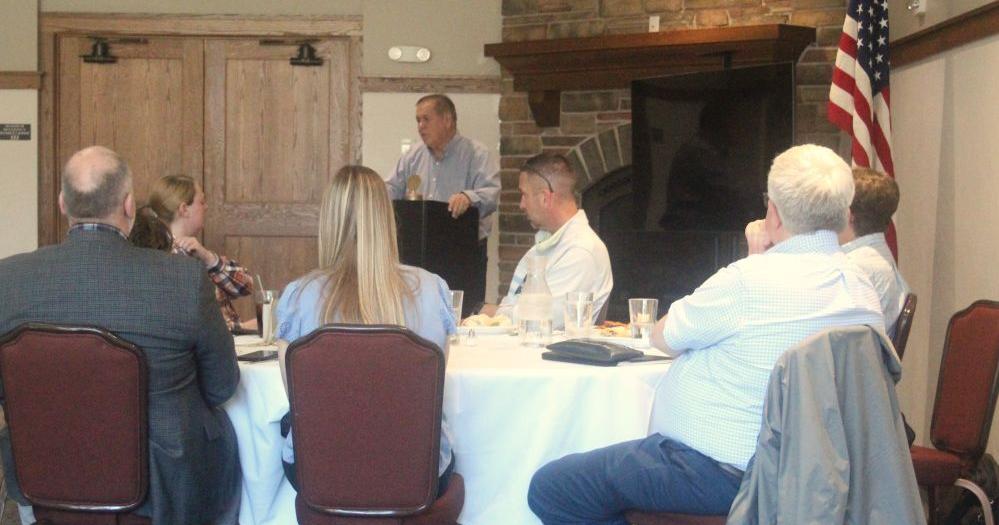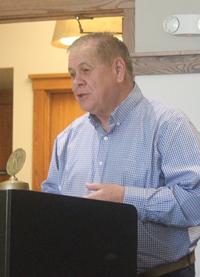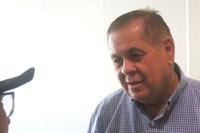LOGAN – Darren Parry, past chairman of the Northwestern Band of Shoshone Nation, spoke to the Kiwanis Club recently.
Darren Parry past chairman of the Northwestern Band of Shoshone Nation tells the story of his people to the KIWANIS Club on Wednesday March 26, 2025.
He generally gives about 50 presentations a year to schools and civic groups about the Bear River Massacre and how it affects him and his people today.
The Bear River Massacre happened on a cold morning on January 29, 1863, when the Shoshone people were enjoying their winter encampment by the Bear River just north of Preston. A contingent of some 200 soldiers from Fort Douglas, led by Colonel Patrick Edward Connor, attacked the Shoshone people killing some 450 people, mostly women and children.
It has been described as the largest mass murder of Native Americans by the US military in history.
Mae Timbimboo Parry, Darren’s grandmother, recorded oral histories of some of the survivors of the massacre. Darren tells his audience some of the stories she passed down to him and some of the lessons he learned from his grandmother.
“I want to use the story of Bear River and make it a difference in the world and become a bridge builder; that process begins with all of us,” Parry said. “I hope we can begin to spread the kind of love that awakens the soul; that makes us reach for more, that plants the fire into our hearts and brings peace to our minds. That is the kind of love the world needs from each of us.”
In 2024, Parry receive honorary doctorate degrees from Utah State University on and teaches classes at the university.
When he was serving as tribal chairman, he was able to purchase the 550 acres of farmland where the massacre took place.
“This was sacred ground where more than 450 Shoshone people were killed, most of them women and children,” he said. “For the first time, we truly owned this land and with that ownership became a responsibility to restore it. I met with Utah State University College dean of Natural Resources.”
Parry told the dean of his vision to return the land to how it looked in 1863.
“A week later we visited the site, took notes and soon after confirmed it was possible to do the restoration work,” he said. “This restoration work would require removing invasive species, replanting native vegetation, rerouting Bear Creek into its original course and healing the landscape in a way my people once did.”
As the university committed ecologists and hydrologists it has moved the project forward.

Darren Parry past chairman of the Northwestern Band of Shoshone Nation talks with a member of the the KIWANIS Club on Wednesday March 26, 2025.
“Restoring the landscape has become a process of healing, demonstrating the power of partnership, research and indigenous knowledge, that worked together to create a lasting change,” Parry said. “When all communities come together, it can challenge traditional frameworks by shifting from top-down approaches to ones that are rooted in collaboration empowerment and community ownership. And that is what we have at the Massacre Site today.”
Restoring the land back to its native landscape after years of use as a cattle pasture has been a process.
Since the tribe took over the property in 2018, they have been focused on raising funds for an interpretive center to tell their story. Parry has been trying to find the $8.5 million projected to build the site.



